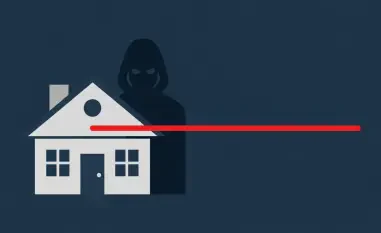Meet Malik Haidar, a renowned cybersecurity expert with years of experience safeguarding multinational corporations from sophisticated cyber threats. With a deep background in analytics, intelligence, and security, Malik has a unique ability to blend business needs with cutting-edge defense strategies. In this interview, we dive into the alarming case of the advanced persistent threat (APT) group known as Bronze Butler, their exploitation of a zero-day vulnerability in a widely used Japanese endpoint management tool, and the broader implications for organizations worldwide. We explore the nature of this threat, the specifics of the exploited software flaw, and the ongoing challenges in defending against state-sponsored cyber actors.
Can you start by telling us about the Bronze Butler group and why they stand out in the cybersecurity landscape?
Bronze Butler is a Chinese APT group that’s been on the radar for over a decade, active since at least 2010. They’re known for their stealthy, targeted attacks, often focusing on espionage and intellectual property theft. What makes them particularly concerning is their ability to exploit vulnerabilities before they’re even known to the public, as well as their focus on specific regions like Japan. They go by several aliases, including Tick, RedBaldKnight, Stalker Panda, and Swirl Typhoon, which reflects how various research groups have tracked their activities over time. Their persistence and adaptability make them a significant player in the threat landscape.
What drives Bronze Butler to target organizations in Japan so frequently?
Japan’s unique position in terms of geopolitics and industry makes it a prime target. The country hosts a lot of cutting-edge technology firms, defense contractors, and government agencies—exactly the kind of entities that state-sponsored actors like Bronze Butler, often linked to Chinese interests, are after for espionage purposes. Additionally, Japan’s regional tensions with neighboring countries can amplify cyber activity as a tool for gaining strategic advantages. It’s not just random hacking; it’s often about stealing sensitive data or gaining footholds for long-term intelligence gathering.
Let’s shift to the software they exploited, Lanscope. Can you explain what Lanscope is and why it’s so popular in Japan?
Lanscope is a unified endpoint management and security platform widely used in Japan. Think of it as a localized equivalent to tools like Ivanti Endpoint Manager that you might see elsewhere. It’s deployed by a huge number of organizations—reportedly one in four listed companies and one in three financial institutions in Japan use it. Its popularity comes from its ability to manage and secure devices across an organization, which is critical for businesses with large networks. It’s tailored to the needs of Japanese enterprises, which often prioritize local solutions due to language, compliance, and support considerations.
Can you break down the vulnerability in Lanscope, known as CVE-2025-61932, and what made it so dangerous?
CVE-2025-61932 is a critical flaw in Lanscope, rated at 9.8 out of 10 on the severity scale, which tells you how bad it is. The issue lies in a series of security oversights. First, Lanscope didn’t properly verify the origin or legitimacy of incoming requests, meaning anyone with internet access to a server could potentially connect. Then, it failed to block unauthorized code execution, so attackers could run whatever they wanted. Worst of all, there was no privilege check, so hackers could exploit the system-level access that endpoint tools like Lanscope inherently have. Since these platforms often run on most or all of an organization’s devices, this flaw essentially opened the door to complete control over a victim’s network.
How did Bronze Butler manage to exploit this vulnerability before it was even known to the public?
That’s what makes this a zero-day exploit—they got in before anyone else knew about the flaw. Evidence suggests Bronze Butler started targeting this vulnerability as early as April 2025, months before it was disclosed in October 2025. They likely discovered the flaw through extensive reconnaissance or insider knowledge, then crafted specific attacks to take advantage of it. Once exploited, they could deploy tools like their Gokcpdoor backdoor or use open-source command-and-control frameworks to maintain access, steal data, or move laterally within networks. It’s a textbook case of how APTs operate with patience and precision.
When did this issue come to light, and how did the response unfold from there?
The vulnerability was publicly disclosed by Lanscope’s developer, Motex, on October 20, 2025. They labeled it an emergency-level issue and quickly released a fix for affected on-premises versions—importantly, the cloud version of Lanscope wasn’t impacted. Following the announcement, organizations like the Cybersecurity and Infrastructure Security Agency (CISA) added it to their Known Exploited Vulnerabilities catalog on October 22, signaling its urgency. Japan’s Computer Emergency Response Team Coordination Center (JPCERT/CC) also warned that local organizations might have been hit as early as April 2025. It was a coordinated effort to alert and protect users, but the damage may have already been done in some cases.
What can organizations learn from this incident about protecting themselves from similar zero-day threats?
The biggest takeaway is the importance of layered defenses. Zero-days are by definition unknown, so you can’t patch what you don’t know about. Organizations need to focus on detection and response—having systems in place to spot unusual activity, like unexpected network connections or privilege escalations, can make a huge difference. Segmenting networks to limit an attacker’s ability to move laterally is also key. And honestly, endpoint management tools, while essential, need to be scrutinized for security just as much as any other software. Regular audits, vendor communication, and staying updated on threat intelligence can help mitigate risks even before a flaw is public.
Looking ahead, what is your forecast for the evolution of threats like those posed by groups such as Bronze Butler?
I expect these kinds of threats to grow in sophistication and frequency. APT groups like Bronze Butler are increasingly leveraging zero-days and targeting critical infrastructure or widely used software, especially in regions with geopolitical significance. We’ll likely see more integration of open-source tools and legitimate cloud services for stealth, making detection harder. On top of that, as businesses digitize further, the attack surface expands—think IoT devices, supply chains, and remote work setups. My forecast is that organizations will need to double down on proactive threat hunting and international collaboration to stay ahead of state-sponsored actors who have the resources and patience to strike when least expected.













